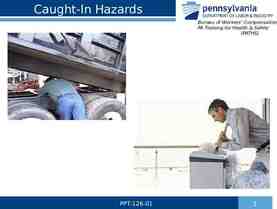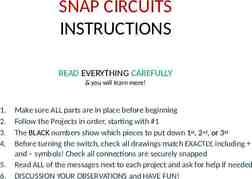PRICING DECISIONS AND COST MANAGEMENT QIU Jiayue YE Ying MA
26 Slides237.46 KB
PRICING DECISIONS AND COST MANAGEMENT QIU Jiayue YE Ying MA Yanpei ZHANG Liqing ZHAO Lu YAO Siyun Group 8 15432246 15415295 15408418 15408434 15430650 15411435
1, How much of the total costs in 2013 are value-added, non-value-added, or in the gray area between? Explain your anwsers briefly. What actions can Calvert take to reduce its costs?
Income Statement for 2013 Revenues Salaries of professional staff (7,500 hours * 52 per hour) Travel 701,250 390,000 15,000 Administrative and support costs 171,600 Total costs 576,600 Operating income 124,650
The percentage of time spent by professional staff on various activities: Making calculation and preparing drawings for clients 77% Checking calsulations and drawings 3 Correcting errors found in drawings (not billed to clients) 8 Making changes in response to client requests (billed to clients) 5 Correcting own errors regarding building codes (not billed to clients) 7 Total 100%
ValueAdded Making calculations and preparing drawings for clients NonValueAdded 77%*390,000 300,300 3%*390,000 11,700 Correcting errors found in drawings 8%*390,000 31,200 11,700 31,200 5%*390,000 19,500 Correcting own errors regarding building codes Total 300,300 Checking calculations and drawings Making changes in response to client requests Grey Area 19,500 7%*390,000 27,300 27,300 Total Professional-Labor costs 319,800 58,500 11,700 390,000 Administrative and support costs at 44% ( 171,600/ 390,000) of professional-labor costs 140,712 25,740 5,148 171,600 Travel 15,000 — — 15,000
2, What are the consequences of misclassifying a non-valueadded cost as a value-added cost? When in doubt, would you classify a cost as a value-added or non-value-added cost? Explain briefly. Definition: Value-added cost would reduce the actual or perceived value or utility (usefulness) customers experience from using the product or service Non value-added cost would not reduce the actual or perceived value or utility (usefulness) customers gain from using the product or service
Value-added cost: Making calculations and preparing drawings for clients, Making changes in response to client requests Non value-added cost: Correcting errors found in drawings, correcting own errors regarding building codes If they misclassify these costs If they misclassify these costs Professional staff would try to reduce these costs these costs would reduce the value or utility (usefulness) customers experience from using the product or service
Grey area: checking calculation and drawings If they cannot judge valueadded and non-valueadded prefer to classify costs as non-valueadded to focus organizational attention on cost reduction cut some costs that are valueadding, poor customer experiences
3, Suppose Calvert could eliminate all errors so that it did not need to spend any time making corrections and, as a result, could proportionately reduce professionallabor costs. Calculate Calvert’s operating income for 2013.
1. Cost savings in professional labor costs: Eliminate all errors by Calvert associates: a) Correcting errors found in drawings (8%) b) Correcting own errors regarding building codes (7%) Work hours of professional staff: 7500 hours So total reduction in professional labor-hours is: 8% 7,500 7% 7,500 1,125 hours Salaries of professional staff per hour: 52 per hour So cost savings in professional labor costs is: 1,125 hours 52 58,500 2. Meanwhile, administrative and support costs vary with professional-labor costs, so the percentage of administrative and support costs on with professional-labor costs (based on 2013 I/S) is: 171600/ 390000 0.44 So cost savings in variable administrative and support is: 0.44 58,500 25740 Therefore total cost saving from eliminating errors is : 58,500 25,740 84240 3. Depending on database of income statement for 2013, we find that current operating income in 2013 Is 124650, so operating income in 2013 if errors eliminated is: 124,650 84,240 208890
Summary: Reduction in professional labor-hours by: Correcting errors found in drawings 600 Correcting own errors regarding building codes Total hours 525 Cost savings in professional labor costs Cost savings in variable administrative and support costs 58500 Total cost savings Current operating income in 2013 Operating income in 2013 after eliminating errors 1125 25740 84240 124650 208890
4. Now suppose Calvert could take on as much business as it could complete, but it could not add more professional staff. Assume Calvert could eliminate all errors so that it does not need to spend any time correcting errors. Assume Calvert could use the time saved to increase revenues proportionately. Assume travel costs will remain at 15,000. Calculate Calvert’s operating income for 2013.
1. Assuming there is no errors , the percentage of time 77% 3% 5% 85% 85% 7,500 hours 6,375 hours (billed to clients generating revenues of 701,250) 2. The remaining 15% of professional labor-hours 15% 7,500 1,125 hours (is lost in making corrections) 3.Calvert bills clients at the rate of 701,250 6,375 110 per professional labor-hour. If the 1,125 professional labor-hours currently not being billed to clients were billed to clients, Calvert’s revenues would increase by 1,125 hours 110 123,750 Calvert’s revenues 701,250 123,750 825,000
Costs remain unchanged Professional labor costs 390,000 Administrative and support (44% 390,000) 171,600 Travel 15,000 Total costs 576,600 Calvert’s operating income would be Revenues 825,000 Total costs 576,600 Operating income 248,400
Summary: 248,400 – 124,650 123,750 123,750/ 124,650 99.3% Operating income would increase 99.3%. In conclusion, Eliminating non value-added costs will increase the operating income if the resources saved could be used to generate revenues. For this reason, organizations should place great emphasis on reducing and eliminating non value-added costs.
13-18 1.calculate Snappy’s operating income for 2013
Total for 250,000 titles(1) Revenue ( 4*250,000) Purchase cost of titles( 3*250000) Ordering costs( 50*500) Receiving and storage( 30*4000) Shipping ( 40*1500) Total cost Operating income 1000,000 750,000 25,000 120,000 60,000 955,000 45,000 Per unit (2) (1)/250,000 4.00 3.00 0.1 0.48 0.24 3.82 0.18
2. For 2014, retailers are demanding a 5% discount off the 2013 price. Snappy’s suppliers are only willing to give a 4% discount. Snappy expects to sell the same quantity of marble tiles in 2014 as in 2013.If all other costs and cost-driver information remain the same, calculate Snappy’s operating income for2014.
Price to retailers in 2014 is 95% of 2013 price 0.95* 4 3.80 cost per tile in 2014 is 96% of 2013 cost 0.96* 3 2.88.
Snappy’ s operating income in 2014 is as follows: Total for 250,000Tiles Per Unit (1) (2) (1)/250,000 Revenues( 3.80*250,000) 950,000 3.80 Purchase cost of tiles( 2.88*250,000) 720,000 2.88 Ordering costs( 50*500) 25,000 0.10 Receiving and storage( 30*4,000) 120,000 0.48 Shipping( 40*1,500) 60,000 0.24 Total costs 925,000 3.70 Operating income 25,000 0.10
3. Suppose further that Snappy decides to make changes in its ordering and receiving-and-storing practices. By placing long-run orders with its key suppliers, Snappy expects to reduce the number of orders to 200 and the cost per order to 25 per order. By redesigning the layout of the warehouse and reconfiguring the crates in which the marble tiles are moved, Snappy expects to reduce the number of loads moved to 3,125 and the cost per load moved to 28. Will Snappy achieve its target operating income of 0.30 per tile in 2014? Show your calculations.
Total for 250,000 titles(1) Revenue ( 3.8*250,000) Purchase cost of titles( 2.88*250000) Ordering costs( 25*200) Receiving and storage( 28*3125) Shipping ( 40*1500) Total cost Operating income 950,000 720,000 5,000 87,500 60,000 872,500 77,500 Per unit (2) (1)/250,000 3.80 2.88 0.02 0.35 0.24 3.49 0.31
Although Revenue per tile has decreased by 0.20 ( 4.00 – 3.80) Purchase cost per tile has decreased by 0.12 ( 3.00 – 2.88) Snappy will be able to achieve its target operating income of 0.30 per tile, for the calculation of the new operating income is 0.31 per tile.
END Thank You







